We don’t typically review seven-year-old boats. These last few years have been extraordinary times, and the Tributary Spud by AIRE, first released way back in 2017, is an extraordinary little inflatable whitewater kayak. Okay, fine. Let’s also make this boat review about the Tater, equally extraordinary, only three years old, and until now—because of popularity and the pandemic supply chain issues—almost impossible to get.
AIRE’s Tributary Spud & Tater, not just for small fries
Let’s travel back in time to when Ed Sheeran’s “Shape of You” was number one on the Billboard Hot 100 singles chart. The Cleveland Guardians were struggling to keep the team together. And whitewater was flat, if not decreasing in popularity.
AIRE Spud Specs
Length: 7’2”
Width: 35.5”
Weight: 21.5 lbs
Capacity: 220 lbs
MSRP: $539 USD
aire.com
There have been lots of great ideas to increase whitewater participation. Diversity initiatives. Crossover kayaks as gateway river drugs, so to speak. More urban whitewater park developments. Let’s make class II cool again slogan T-shirts. And, of course, getting kids paddling. But how?
“The Spud is perfect for introducing kids to the joys of whitewater kayaking. It is light, short and stable so kids can get a good feel for running waves, punching holes and eddylines in a kayak designed just for them,” wrote AIRE in their printed catalog three years before the world locked down, when they first launched the Spud.
AIRE Tater Specs
Length: 8’4”
Width: 38”
Weight: 24.5 lbs
Capacity: 275 lbs
MSRP: $699 USD
aire.com
At the time, I remember thinking AIRE had taken their cute little BAKraft packraft and cloned it in a more durable and less expensive raft-grade material. Made sense to me. I’d paddled the BAKraft and loved it.
By creating the smallest and lightest whitewater kayak for the purposes of hiking or biking in and paddling out, AIRE inadvertently pushed the limits of how small we thought a legit kayak could be. The BAKraft wasn’t only easy to carry, it was silly fun to paddle.
It doesn’t take a sales and marketing genius standing at too many on-water events watching kids drawn to the brightly colored lime green BAKraft before a packraft morphs into a production kids’ boat with the coolest name. Keep it reasonably priced, and it’s a sure win.
The history of the Spud’s popularity goes like this, I’m sure: Parents buy Spuds for kids. Parents, of course, also paddle them; who wouldn’t? Parents loan the Spuds to other adults who don’t paddle, “Put Jimmy in the Spud, he’ll be fine.” Jimmy paddles a river for the first time. Jimmy does fine. Jimmy loves it and now loves whitewater. Jimmy buys a Spud for himself.
Seven years later, the AIRE catalog now reads, “The Tributary Spud is designed for ages Youth+… The Spud doesn’t stop at kids, though. It’s a wild, playful boat for adults as well.”
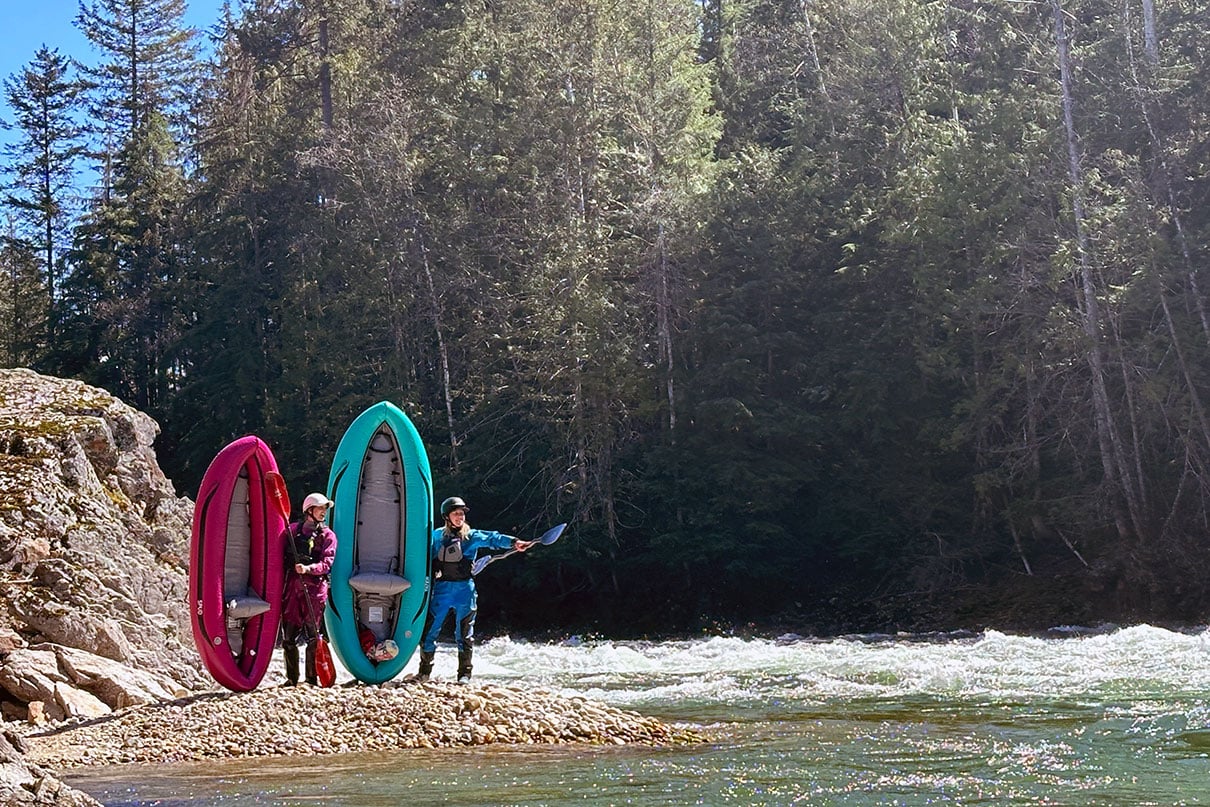
Design & performance
The Spud is seven feet, two inches long and 35.5 inches wide with 7.5 inches of bow and stern rise. It has two air chambers; one is the 11.5-inch collar or tubes, and the other is in the floor. Because the floor is inflated and floats above the water, it’s self-draining with no need for a skirt. You sit directly on the floor with the seat—backrest, really—lashed in where it makes sense to get it trimmed level. That’s it. Oh, and AIRE makes its inflatables using an exterior shell with a vinyl AIRECELL bladder zipped inside.
The Spud’s load capacity is 200 pounds, so it can accommodate a range of little to big kids. The Tater, my second favorite name for a whitewater boat, is 14 inches longer and two inches wider, has one more inch of rise at both ends and can hold a max load of 275 pounds.
“The Tater is designed to deliver the same playful performance you’ve come to love from the Spud, with enough capacity to carry adult-sized paddlers comfortably,” says AIRE’s art and marketing director, Alex Aldecoa. She says their sales team spends a lot of time talking customers up into the Tater. “The Tater does all the same things, but with more room in the cockpit and more float, so it performs the same as the Spud for smaller paddlers.” Remember, the Spud was originally designed for kids.
Rolled and bundled with a single four-foot NRS cam strap, the Spud is no bigger than a microwave oven. Side-by-side, the Tater and Spud are hard to tell apart, depending on who did the rolling. The Tater is just 24.5 pounds, so only three pounds more. It’s more difficult to discern the difference than you’d think.
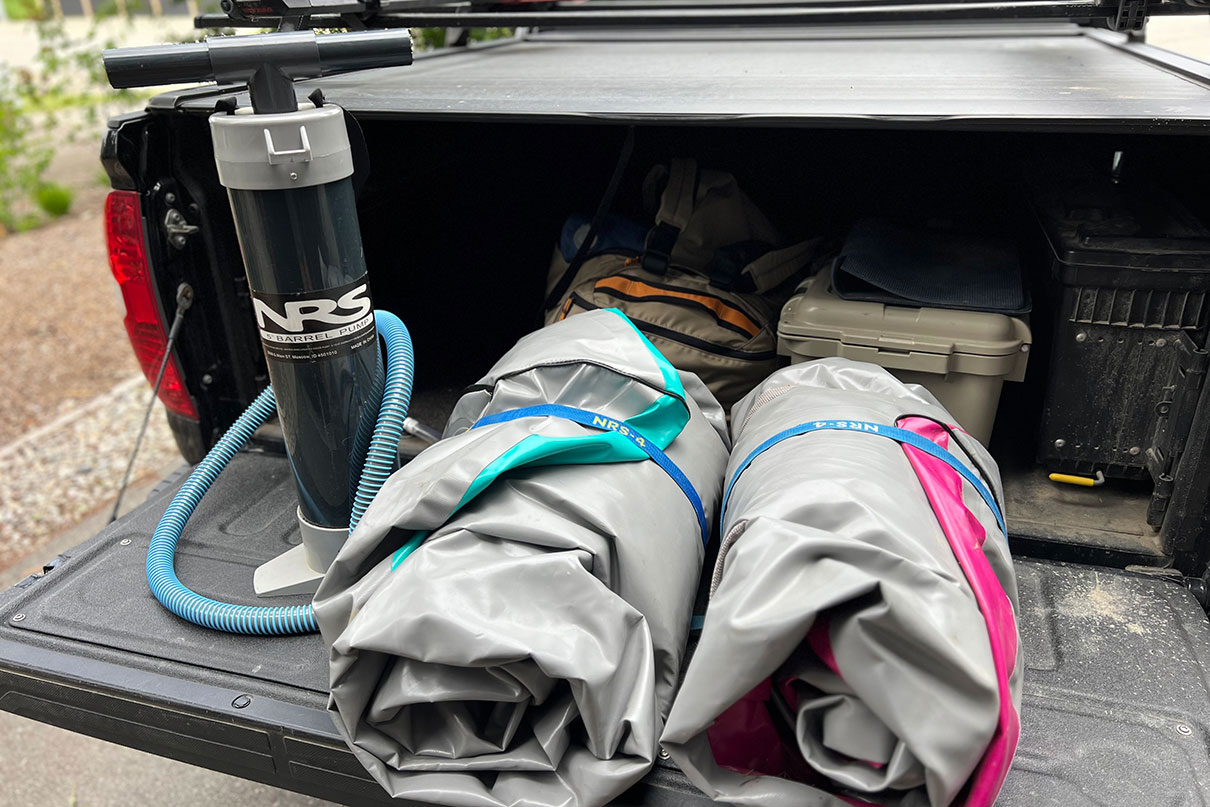
From dropping my tailgate to fully inflated using an NRS barrel pump, the Tater took me under four minutes to fully inflate to the recommended approximate pressure of about 2.5 psi. Out of breath but determined to beat my time, the slightly smaller Spud took me about the same. Well within the attention span of even the most eager toddler.
Spud & Tater on the water
On the Internet, you’ll find videos of advanced boaters running Spuds and Taters down class IV creeks and drops. Spend more time Googling and you’ll also find the British Lawn Mower Racing Association proving that, given the chance, almost anything is taken far beyond its intended purpose.
Jamie Cruickshank was a raft guide. Now, she’s a busy wildfire fighter based out of Revelstoke, British Columbia. Because she’s deployed most of the summer, she doesn’t get to hardboat as often as she used to. Invited to join three locals for a low water, early spring run on the nearby class II to III section of the Shuswap River, we loaned her our Spud.
“I’m not afraid to swim whitewater, but I’m not as confident with my roll these days,” Jamie said. “I loved the Spud. Forgiving. Sporty. Fun. If I swam, I could self-rescue.” Jamie didn’t swim. And she wouldn’t have gone if not for the stability and comfort she felt in the Spud. The way I see it, AIRE grew whitewater by 33 percent that day.
How else are the Tater and Spud growing whitewater? Paddling’s media sales manager, Brenna Kelly, loads three-year-old Hudson and six-year-old Piper in the larger Tater and loans the Spud to Christie and her daughter, Josie. Christie wasn’t a whitewater paddler, until now. Well within the load capacity of each boat, even with snacks, they all float the class I runout of the Jordan River exploring every gravel bar along the way.
With such wide appeal, it’s no surprise the Spud and Tater are AIRE’s top-selling consumer boats. And they probably will be for another seven years. Get them while they’re hot.
Related articles
AIRE boat reviews
- AIRE Cub Inflatable Raft Review
- Packraft Review: AIRE BAKraft Expedition
- AIRE Sabertooth Raft Review
- Video: AIRE Sabertooth Raft Review
Inflatable whitewater boat reviews
- Inflatable Kayak Review: Sevylor Colorado
- Inflatable Kayak Review: Sea Eagle 370
- Packraft Review: AIRE BAKraft Expedition
Hashing out plans with the AIRE Spud and Tater on British Columbia’s Shuswap River. | Feature photo: Ursula Kilbridge


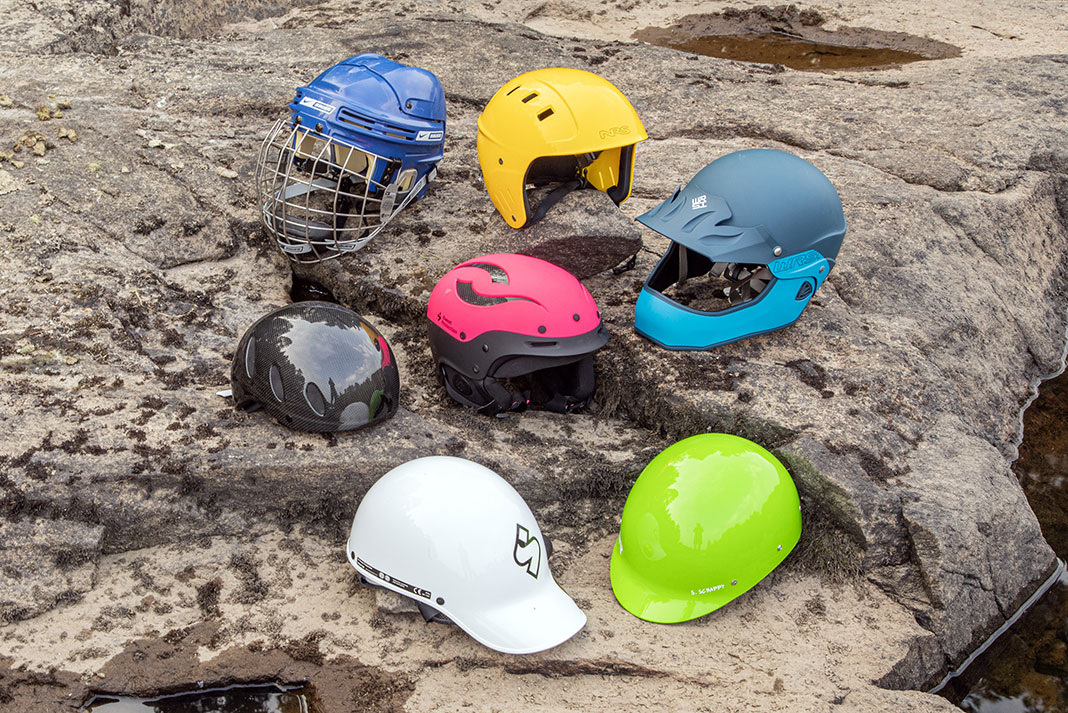
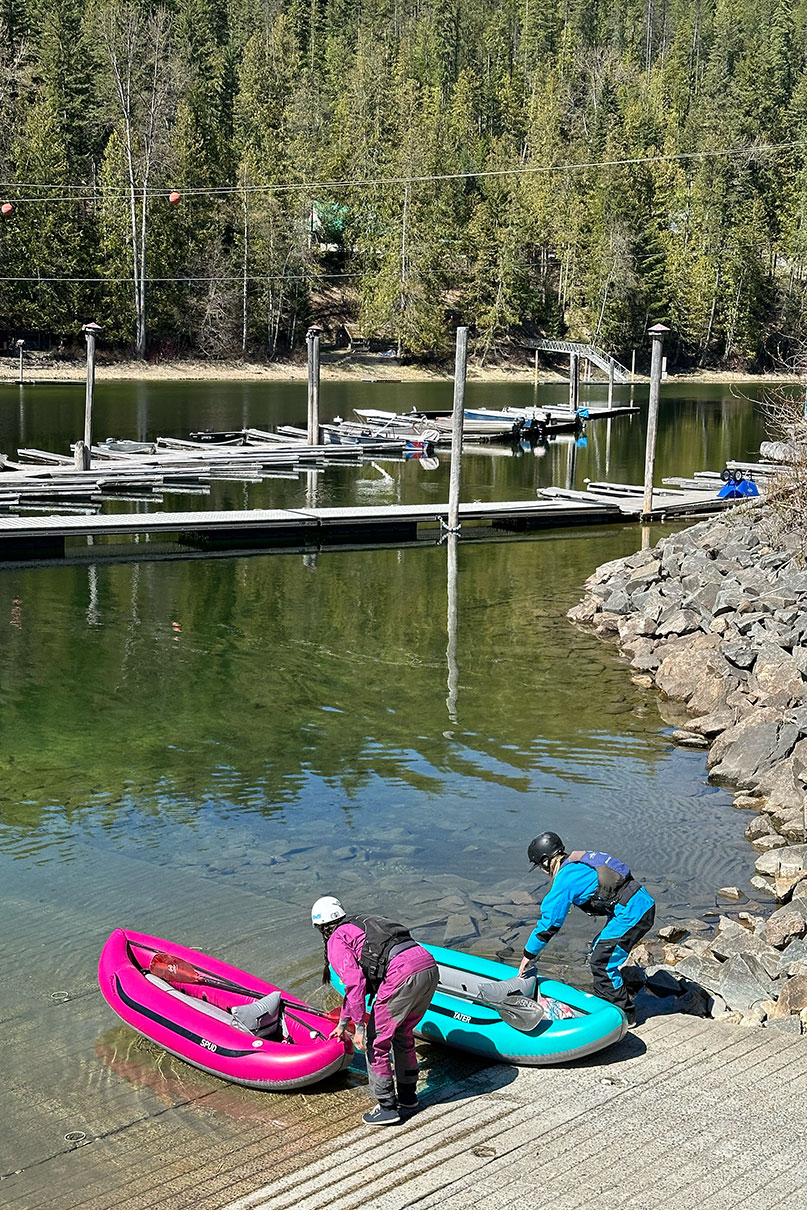
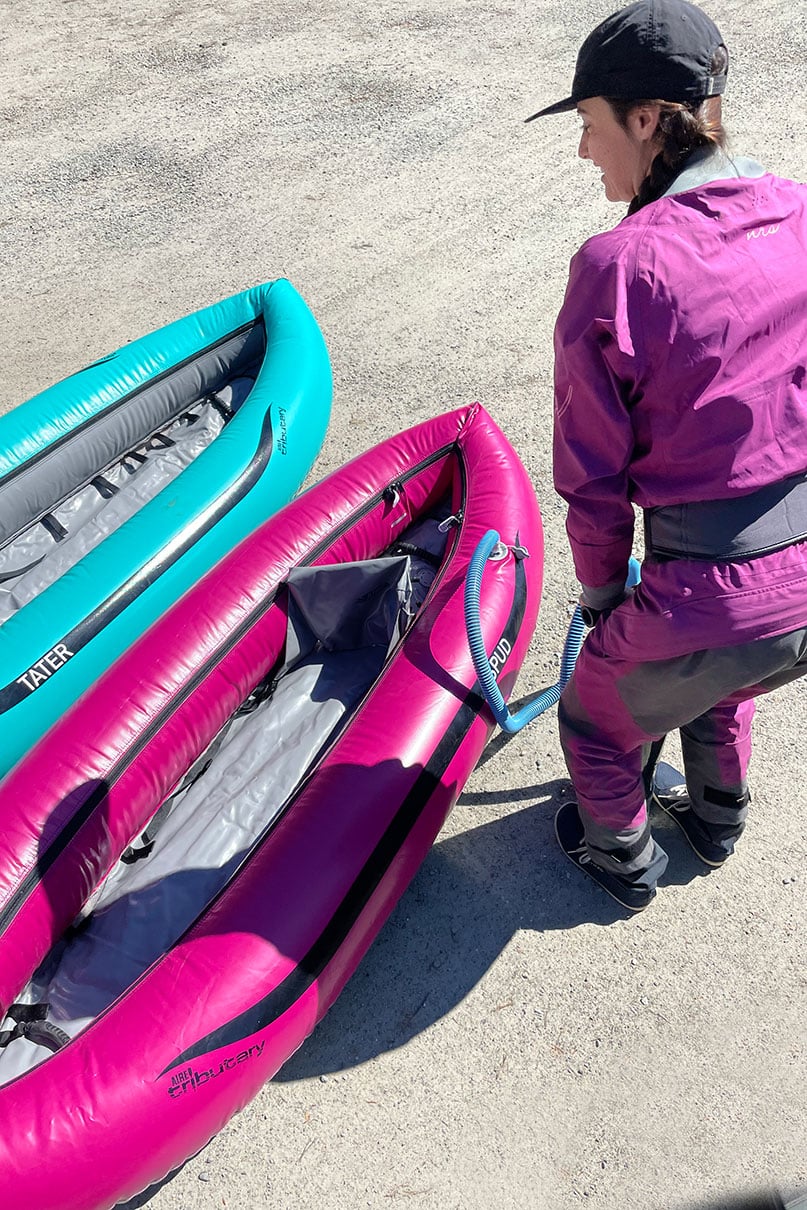
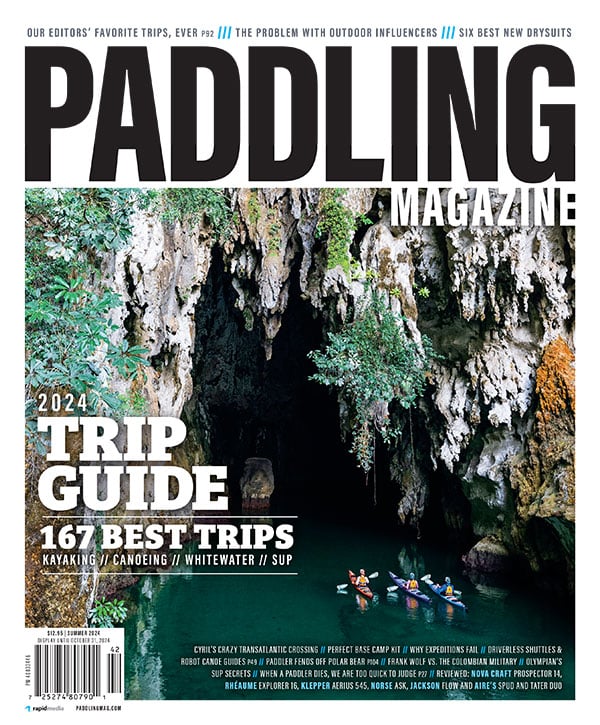 This article was first published in Issue 72 of Paddling Magazine.
This article was first published in Issue 72 of Paddling Magazine. 
